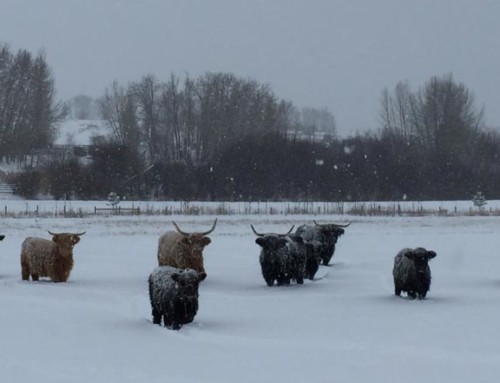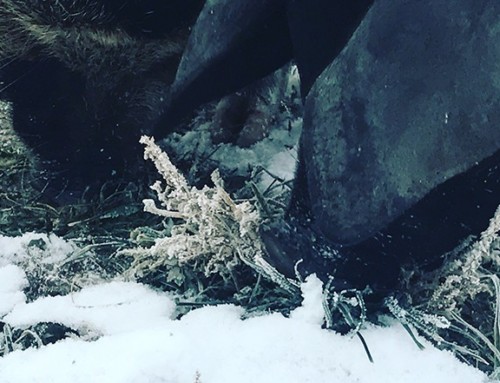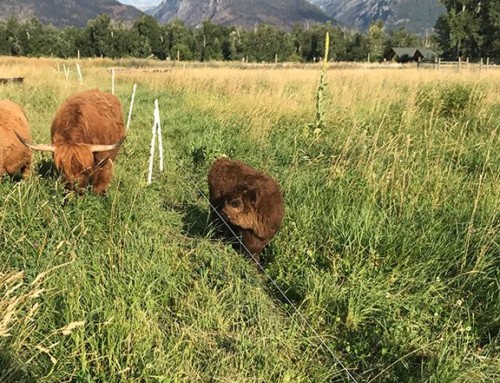At ABC acres, we are always looking for ways to improve the health and production of our soils. It honestly has moved from a mental preoccupation to a slightly obsessive pursuit. So, when we learned of the concept of bale grazing through some research, we were intrigued and interested in experimenting with it on our pastures with our cattle during the winter months. While attending a soil health workshop where Gabe Brown and Neil Dennis presented on the topics of pasture management and soil building practices, we heard both of them share their tremendous results with bale grazing. Increases in soil organic matter, forage production and quality, water infiltration and retention, and profits were all expressed, in addition to other pluses to the practice. After hearing all of these benefits, and thinking how it would fit into the context of the farm’s operations and goals, we were convinced that it was a must for us to incorporate on the farm.
Typically, bale grazing is done with the large round bales. The bales are placed out in the field, and oftentimes portable electric fencing is used to rotate the cattle and control the amount of hay they have access to for a set period of time. We had already had our hay baled into small square bales, so that is what we are using, which adds a significant labor increase to our bale grazing operation. However, we feel the experiment is worth the extra effort, with the expectation of gains in soil health and pasture production in the future.
Farmers who bale graze have praised the many benefits of the practice. Not only do they see an increase in forage production in pastures where they bale graze, their winter labor and fuel savings help their operations become more profitable. In addition, environmental benefits, particularly with watershed health are noted. When cattle are fed in a feedlot, the manure and urine concentration often leaches or runs off into surrounding groundwater or waterways. The manure left in the feedlot must be moved and spread on the fields, but a significant amount of fertility has already been lost. Bale grazing keeps the fertility in the field, spread out so it is not lost for the farmer, as well as not added as pollution to the local and peripheral environment. Additionally, large amounts of carbon and nitrogen are lost into the atmosphere in the feedlot scenario, with carbon adding to greenhouse gas issues. When manure is distributed across the pasture, much less is released into the atmosphere, but instead stored into the soils for both increases in soil and planetary health.
As we continue our daily hay feedings to our cattle and move across the pasture with each feeding, we feel a sense of satisfaction in knowing we are partnering with our animals to build fertility and soil creation. The cattle our helping to improve the pastures both for themselves and the future generations of their offspring to enjoy and be nourished by, and by doing so engage in a noble activity. May it be the same for all of us! In the midst of all the issues we face with this planet we live on, it is our hope that more and more of us engage in a lifestyle of land and resource regeneration, not only for us, but for the generations to come.
Blessings,
Grant






